As part of the MarPAMM project, BirdWatch Ireland staff have been deploying GPS tracking devices and/or engraved leg-rings on species of large gulls including: European herring gulls (Larus argentatus), lesser black-backed gulls (Larus fuscus) and great black-backed gulls (Larus marinus). This work will give us an insight into the movement ecology of these species and the information will feed directly into MarPAMMs management plans.
Why satellite tag large gulls?
In 2019, GPS-GSM tags made by Ornitela were deployed on two species of large gulls within breeding populations in the North West of Ireland. The primary aim of the GPS tracking work is to help determine the relative importance of the MarPAMM InterReg VA sea areas by gulls during the breeding season and over the winter. This data can identify the most important foraging sites and possible interactions/overlaps with anthropogenic activities including offshore energy, fisheries and so forth. Very little seabird tracking (of any species) has been done in this sea area so it will significantly add to our understanding of how the areas are utilised.
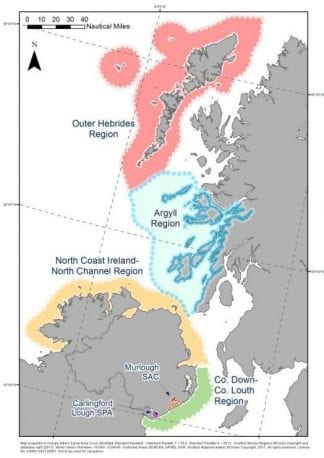
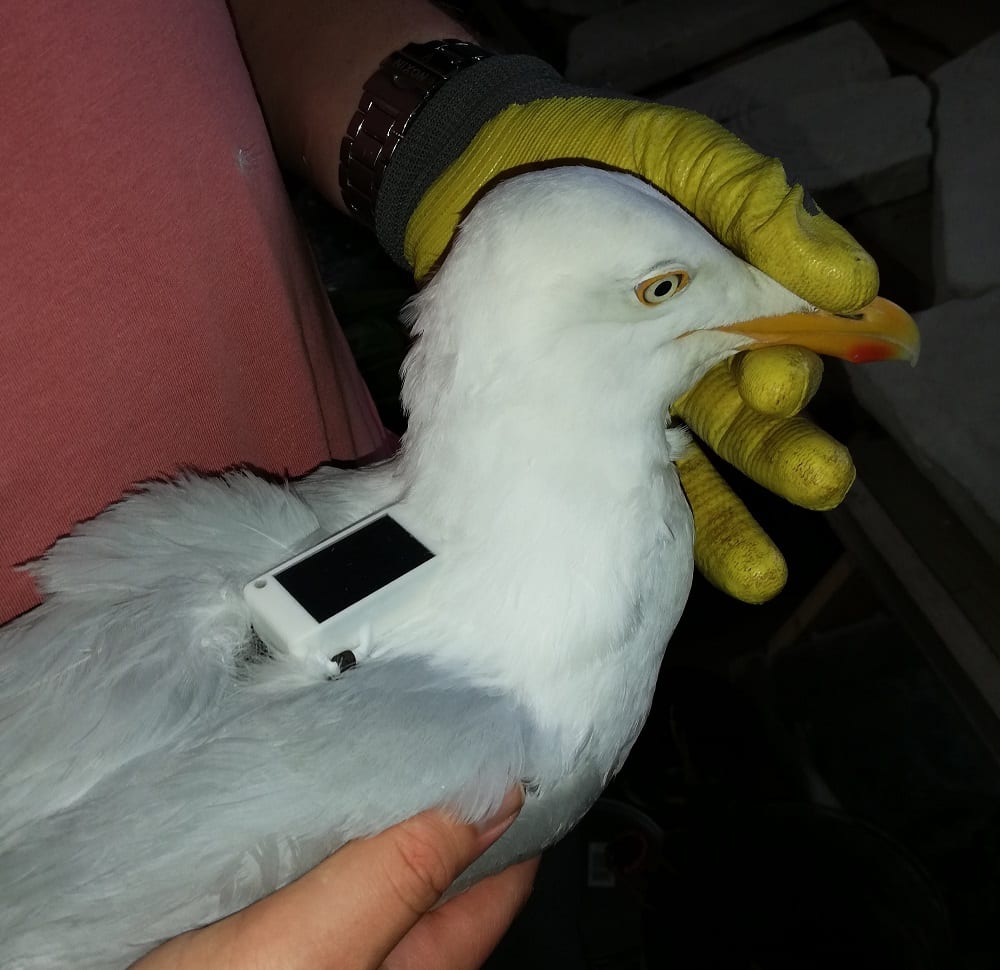
Where and how?
We have been working at well known island gull colonies – Inishmurray (Sligo) and Inishtrahull (Donegal), each holding thousands of large gulls and on which all three species are breeding. Gulls were captured and fitted with GPS/GSM tags (15g or 20g Ornitela Ornitrack) using weak-link backpack Teflon harnesses. Tags were fitted (under licence) to 18 gulls (Herring Gull n=9; Lesser- black-backed Gull n=9) between late June and early August 2019 and tags set to record (GPS horizontal position and behaviour via accelerometry) with varying frequencies, depending on position. The built-in accelerometers are equivalent to the birds carrying ‘Fit-Bit’ type devices as the data can tell us when birds are engaged in different behaviours – incubating (sitting at nest), flying to forage, swimming and so forth!
Colour ringed gulls
In addition to the GPS tags, engraved colour-rings were fitted to adult and young large gulls of all 3 species in order to build up a picture of the wider dispersal of these species – supplementing the information arising from the necessary restricted sample (due to costs!) of GPS tagged individuals. The colour-rings can be observed by citizen scientists across Europe for many years to come.
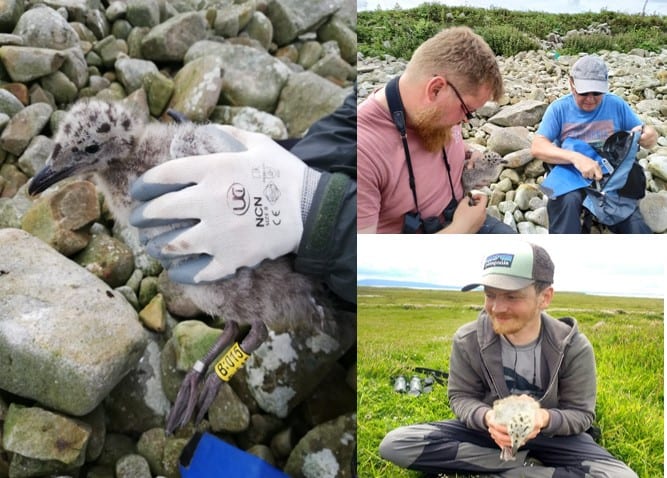
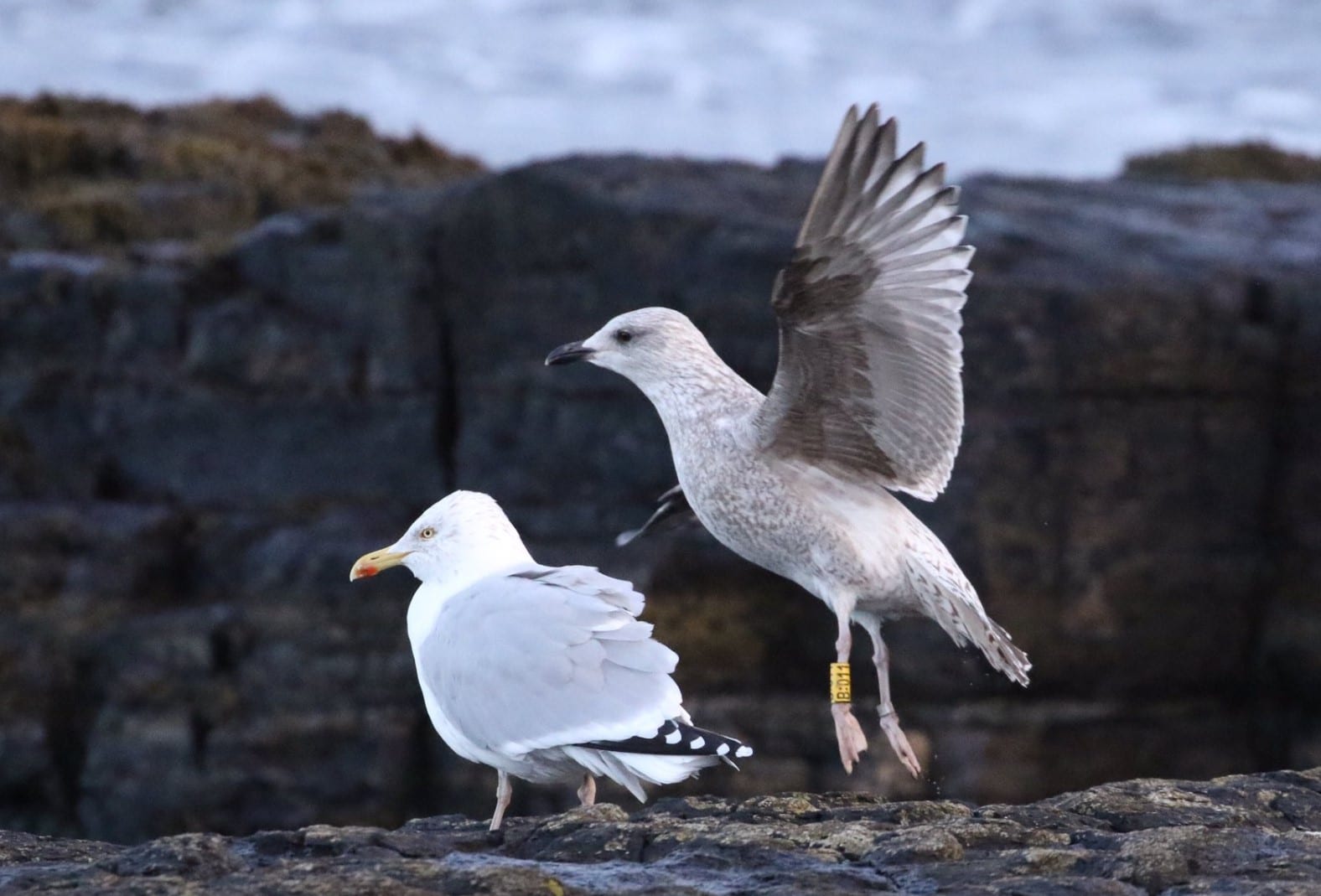
Report a C-Ring Sighting
Our gulls have yellow darvics with a black four alpha-numeric code starting with “B” followed by a colon “:” and three numbers eg: B:095.
The photo to the left was taken and reported to us by Neal Warnock. If you see any of our colour-ringed gulls, like in the photo, please report them by completing the contact form below ‘B:000’. Note that there are other similar studies using different colours and engraved characters on these and other gull species so click on the ‘Other’ link to report a different C-Ring
What do they do after the breeding season?
During the non-breeding season, herring gulls usually remain close to the breeding areas or move elsewhere in Ireland. Our 2019 tagged HGulls did just that.
On the other hand, our populations of lesser black-backed gulls are mostly migratory, and winter as far south as NW Africa. Our tagged LBBGs have all migrated south to the Mediterranean, including Portugal, southern Spain, Western Sahara, Morocco as seen in the map to the right.
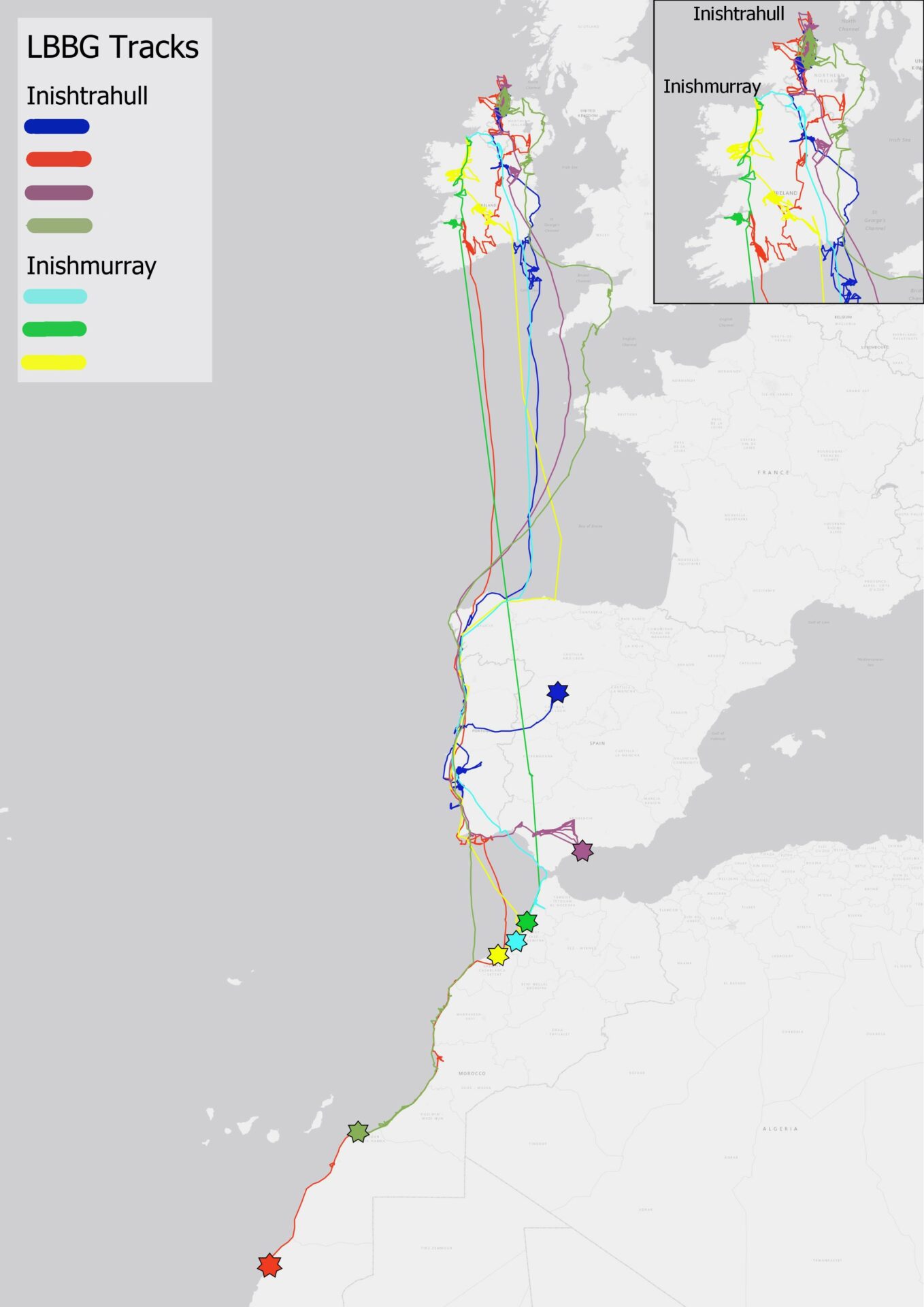
What are they doing now?
As of early April 2020, about half of our tagged LBBGs are still at their wintering grounds in the Meditteranean while the other half have started moving North, making their way back to their breeding colonies in NW Ireland where they were originally caught. One LBBGs has already made his way back North to Inishtrahull off Donegal and has been hanging around Malin Head area, close to his breeding site. The video to the left shows its journey from capture last summer to April 2020.
Using the data collected from the GPS tag we can visualise the movements of the tagged gulls! Have a look below
LBBGulls migrate south
The animation to the right shows the tracks of 2 LBBGs that were tagged on Inishmurray, and 4 LBBGs that were caught and tagged on Inishtrahull. Click on the play button and see the variation in movement orientation and timing!
Resident HG movements
HGs may not do the exciting trip down south to the Mediterranean, but they do undertake more regional movements. This particular HG was caught and tagged on Inishtrahull. It wintered around the Lough Foyle area but spent some time around the Firth of Clyde, illustrating the point that these birds don’t recognise administrative boundaries!

